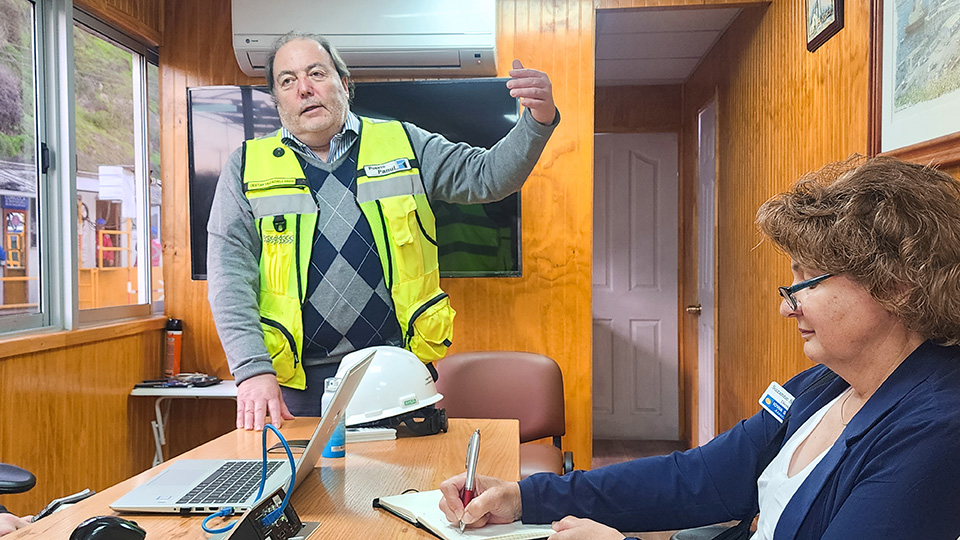
(Photo: Iowa Soybean Association / Aaron Putze)
Pressure ports
October 1, 2023 | Aaron Putze, APR
You don’t have trade without ports. Educated as a chemical engineer, Chris Valenzuela is navigating the challenges of managing the flow of commerce as CEO of Puerto Panau, Chile.
It’s not a job for the faint of heart. A lease to operate the port expires in 2029 and labor unrest among the port’s 130 employees represented by four unions is constant. And, to add to the fun, ever-increasing regulations driven by a far-left government makes upgrades to the port’s infrastructure nearly impossible.
“Maintaining the operating concession (contract) is more political than it is technical or financial,” says Valenzuela. “Environmental restrictions make it difficult to invest. Much time and attention are given to just maintaining the technology we have.”
Located near San Antonio on the Pacific Coast of Chile, the port is a symphony of activity. Constructed in 1915, it’s one of the country’s busiest commerce hubs. More than 25% of all cargo received by the port sails out of the United States and Canada.
Two cranes move more than 1,000 tons of cargo per hour, operating 24/7. Given the port is absent warehouses and silos, trucks and a handful of trains are in constant motion transporting freight immediately from the dock to waiting customers scattered throughout central Chile (home to 90% of the country’s population).
That output translates to almost 12,000 tons per day of corn and about 9,500 tons of soy and moved by 400 trucks.
“Our biggest challenge is continuing to operate the port more efficiently and move more cargo more quickly,” says Valenzuela.
The port moves nearly 3.3 million metric tons (MMT) of product annually. Valenzuela says the goal is to achieve 4 MMT.
“That’s a big challenge given the political, regulatory and environmental climate we’re currently working in.”
Recently, Omaha-based Ag Processing, Inc., moved three vessels of soybean meal to Chile via Gray’s Harbor in the Pacific Northwest. The shipments represent about 3% of soybean meal cargo received at Puerto Panau. Whole soybeans and some soybean oil also make their way through the port, including 20,000 MT of the legume via the Gulf.
Valenzuela says most soy that enters Chile arrives by truck from Argentina. However, the trek through the Andes can be slow and even dangerous during winter.
Last year, Puerto Panau increased volume through the port by 2-3% but there is not a lot of political will to approve growth and upgrade facilities, Valenzuela says.
“The newest poultry facility was constructed about 7-10 years ago,” he says, “and not a lot of new operations are planned but we’re hopeful for growth.
The quality of U.S. soybean meal tests well, says Valenzuela. “It’s ready to feed and higher in amino acids. U.S. quality of soybean meal is very good; you can see the difference.
“And more poultry means more product moving through the port, so it’s a win-win.”
Back